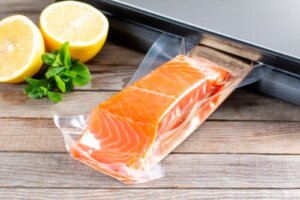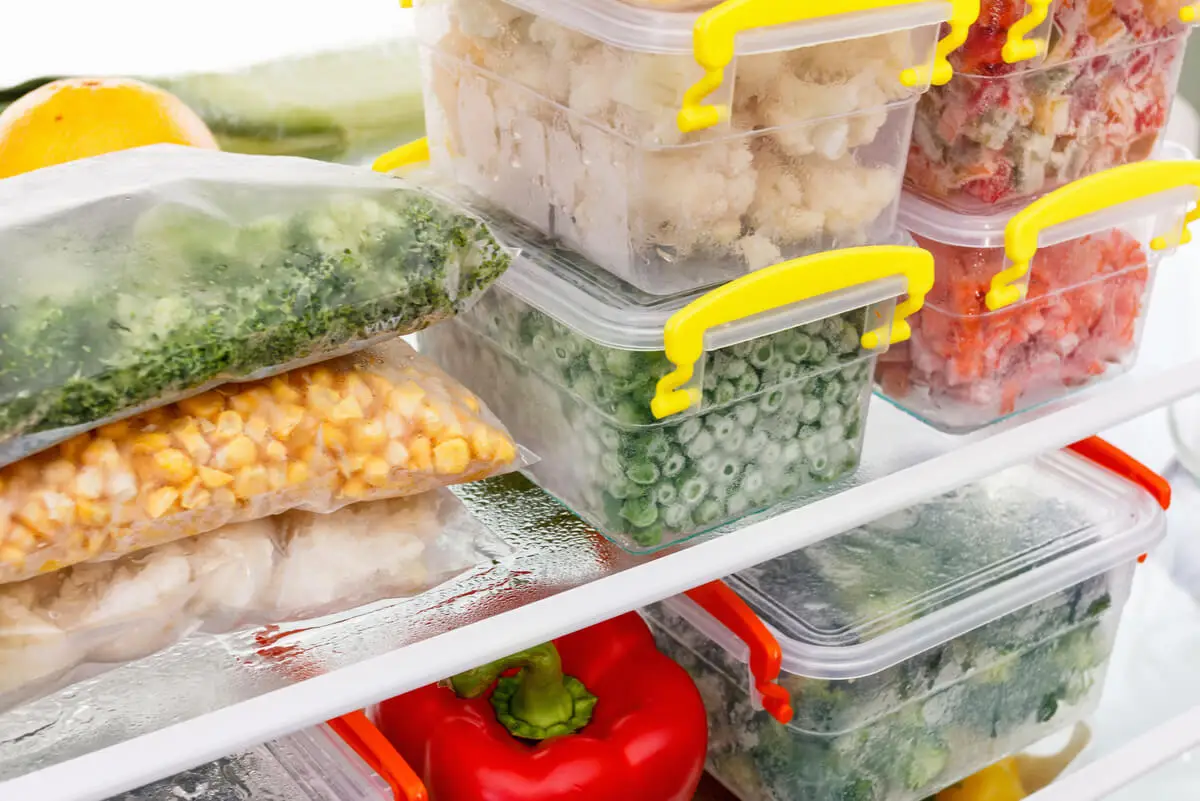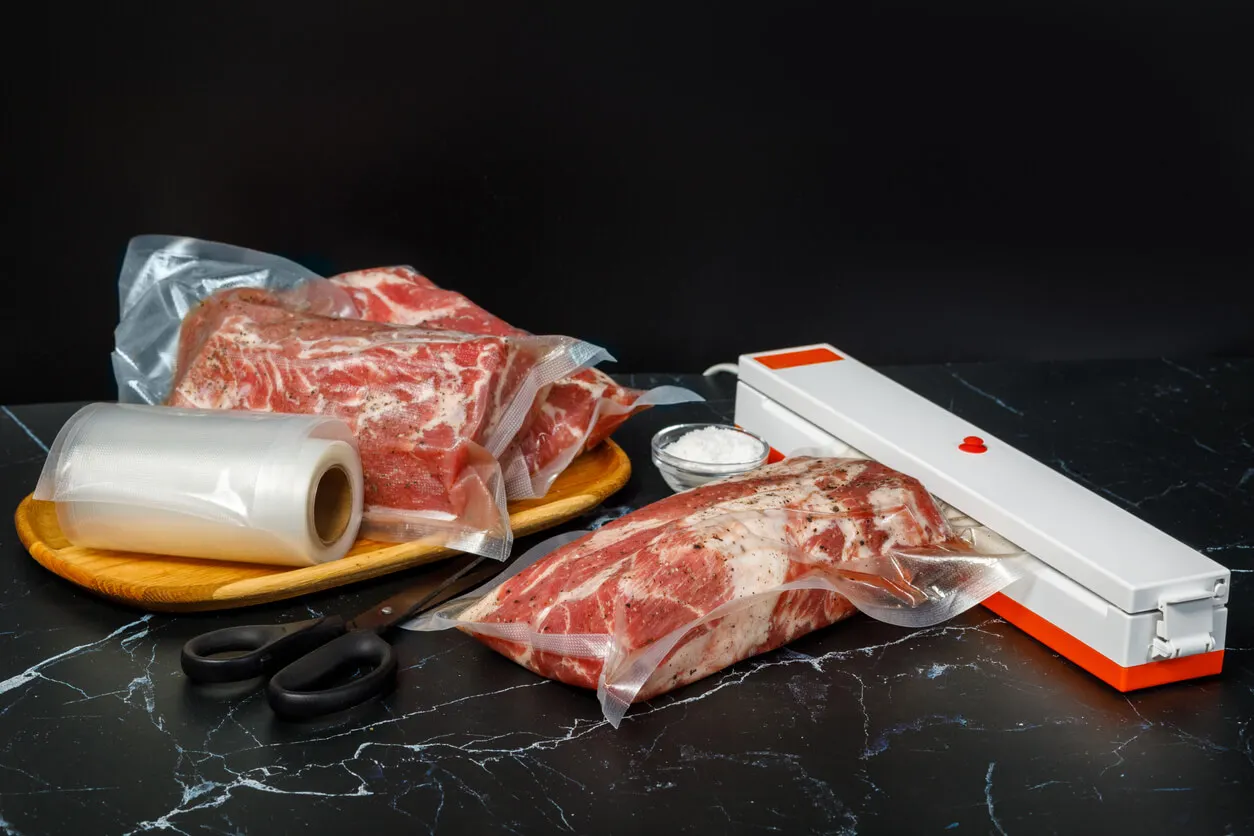The Advantages and Disadvantages of Vacuum Packaging Food

Many people wonder if it’s a good idea to buy a machine for vacuum packaging food. When it comes to food preservation, there are several ways to reach the goal of extending its shelf life. This is necessary, especially if large purchases are made.
The vacuum method has many advantages, either through a manual technique or a packaging machine. However, this form of preservation is not infallible and also has some drawbacks.
What does it mean to vacuum pack food?
Vacuum packaging is a food preservation technique. It consists of removing the air surrounding the product.
The next step is to seal it inside a container, which protects it from external agents and threats. Its objective is to favor the shelf life of the food, since its deterioration accelerates in the case of remaining exposed.
This type of packaging is common in restaurants and industrial kitchens since it reduces oxygen to levels of 1%. This prevents oxidation and fungal growth. In general, products are packaged inside a sealed plastic container.
However, not all foods are suitable for this method. The most commonly used, even in retail supermarkets, are the following:
- Fish
- Seafood
- Vegetables
- Red meats
- Sausages
The advantages of vacuum packaging foods
Vacuum packaging has a number of advantages that make it a great preservation option. This is especially true when large purchases are made and the weekly food is to be managed. Let’s take a look at some of the benefits of this food preservation method.

It prevents rust
The vacuum packaging method acts against the contact of food with oxidative enzymes that cause food degeneration. In this way, the chemical processes that cause food to oxidize are avoided, which favors its odor, flavor, and preservation.
Vacuum packaging reduces fermentation
The hermeticity of this technique also helps to prevent food fermentation. This is because the foods are out of contact with bacteria and fungi that cause bad odor and degeneration. Therefore, their shelf life is extended for a longer time.
No thawing time
While freezing food is one of the most effective methods of preserving food, it’s not suitable for every product. Some require a long time to thaw once you want to use them. To avoid this step, food can be vacuum-packed and preserved without freezing.
The refrigerator often affects the texture of food. It’s common that they do not remain in the same shape as when they were stored.
On the other hand, vacuum packaging extends the shelf life by 3 to 5 times without affecting freshness. The number of days depends on the components, such as water and fat. In the case of meat, it’s usually extended by 1 month, while fish is extended by 10 to 14 days.
A combination of methods
Freezing and vacuum packaging don’t have to be opposing techniques. Just as vacuum packaging extends the shelf life of fresh foods by up to 5 times, is the case with frozen foods. In this way, it’s possible to store this type of food for more than 3 years.
Marinades
Another advantage of vacuum packing food is that the cooking technique of marinating can be applied. For example, you could leave a piece of meat or other food for several hours in contact with a liquid with different spices.
The objective is to tenderize and also to flavor the cut. With some packaging machines, it’s even possible to use the bag to promote the marinating technique. The food should be placed inside together with the necessary liquid and seasoning and allowed to stand for as long as desired.
Vacuum packaging cooked food
Just as packaging machines prepared for storing liquids contribute to the marinating technique, it’s also possible to store already cooked food for several days. In addition, maceration can be practiced. Therefore, you can add seasoning foods with salt, herbs, liquids, and other spices to generate a better flavor and aroma.
With this method, it’s possible to keep recipes in perfect condition for more than a week. Some foods that can be preserved this way are the following:
It preserves the properties of the food
One of the greatest advantages of canning is that most foods retain their properties since it maintains the humidity of the products. In this way, neither the textures nor the color is modified.
The exception is red meat, which can lose tone, but that doesn’t mean that it’s in a bad condition.
With all these advantages, vacuum packaging is a great option for those who make large purchases and need to store certain foods. It’s also great for people who plan a varied weekly diet.
We think you may also enjoy reading this article: Can You Eat Food that Has Fallen on the Ground?
The disadvantages of vacuum packing food
It is clear that, however effective and useful a product may be, it’s never the definitive solution. All appliances have their disadvantages and, in the case of vacuum packaging machines, the cons have to do with budget and waste.
Cost
Although there are cheaper options, vacuum packaging machines tend to be expensive. It’s a considerable investment must be made to have a product with a certain quality, which can implement all the alternatives already described. Otherwise, it’s possible for the bags to break or for air to penetrate.
Waste
The application of this method includes the use of disposable plastic bags, which represents more waste of a material that is harmful to the environment. Therefore, it’s not a very environmentally-friendly technique.
Reusable bags are available, but they are more complex to wash when certain products are included. On the other hand, you must have space in the kitchen, as the machines tend to take up a lot of space and are not so convenient to store.

Heat and humidity affect them
No matter how good the packaging is, some environmental conditions can still affect vacuum-packaged foods. They’re often susceptible to heat, so if the temperature is too high, the aging process of the bag is accelerated. In addition, the constant presence of moisture in the environment also affects the container.
Vacuum packaging is not suitable for everyone
While some packaging machines allow the storage of liquid foods, there are others that don’t. And in this case, the option of storing sauces, stews, soups, and other foods is lost.
In addition, fresh fruit and vegetables do not usually do well with this type of storage. It’s common for fruit to generate oxidation anyway.
We think you may be interested in reading this, too: 14 Foods that Should Always Be in Your Fridge
Vacuum packaging is not always the best option
Choosing whether or not to vacuum pack food is a decision that must be made taking into account all its advantages and disadvantages. While it can help to extend the shelf life of many foods, others are less adaptable to airtight containers. It’s best to apply the method for certain foods and use traditional freezing for others.
All cited sources were thoroughly reviewed by our team to ensure their quality, reliability, currency, and validity. The bibliography of this article was considered reliable and of academic or scientific accuracy.
- Leiva, Jonathan Carlos. “Evalución Del Envasado Al Vacío Como Técnica de Conservación de Lechugas( Lactuca Sativa L.) IV Gama.” עלון הנוטע 66 (2013): 40. עלון הנוטע. Disponible en: http://cybertesis.uach.cl/tesis/uach/2013/fal533e/doc/fal533e.pdf
- López y Rojas H, Riveros Villa F, Bernardo Tello A, Pérez Solís M. Aseguramiento de la calidad de carne de cuy (Cavia porcellus) envasado al vacío y conservación por congelación. riv [Internet]. 26 de enero de 2018 [citado 18 de mayo de 2022];10(4):153-60. Disponible en: http://revistas.unheval.edu.pe/index.php/riv/article/view/77
- Figueroa Sandoval, Benjamín, Figueroa Rodríguez, Katia Angélica, Carrillo Hidalgo, Oscar Miguel, Álvarez Olguín, Miguel, Hernández Rosas, Francisco, Evaluación de dos presentaciones de envasado al vacío de vísceras de ovino en México durante su refrigeración. Revista Científica [Internet]. 2013;XXIII(3):245-253. Recuperado de: https://www.redalyc.org/articulo.oa?id=95926665003
- USDA. “Hongos En Los Alimentos : ¿ Son Peligrosos ?” Servicio de Inocuidad e Inspección de los Alimento (2010): 1–6. Disponible en: http://www.fsis.usda.gov/wps/wcm/connect/03e22c03-8062-4ca1-a8c2-fe94bafc0222/Molds_Are_They_Dangerous_SP.pdf?MOD=AJPERES
- Martínez-Ruiz, Rosa, Ramírez-Valverde, Benito, Vaquera-Huerta, Humberto, Cong-Hermida, Milagros de la C., Piña-Ruiz, Hugo H., Rojo-Martínez, Gustavo E., Rodríguez-Sauceda, Raquel, ENVASES INTELIGENTES PARA LA CONSERVACIÓN DE ALIMENTOS. Ra Ximhai [Internet]. 2014;10(6):151-173. Recuperado de: https://www.redalyc.org/articulo.oa?id=46132135012
This text is provided for informational purposes only and does not replace consultation with a professional. If in doubt, consult your specialist.








